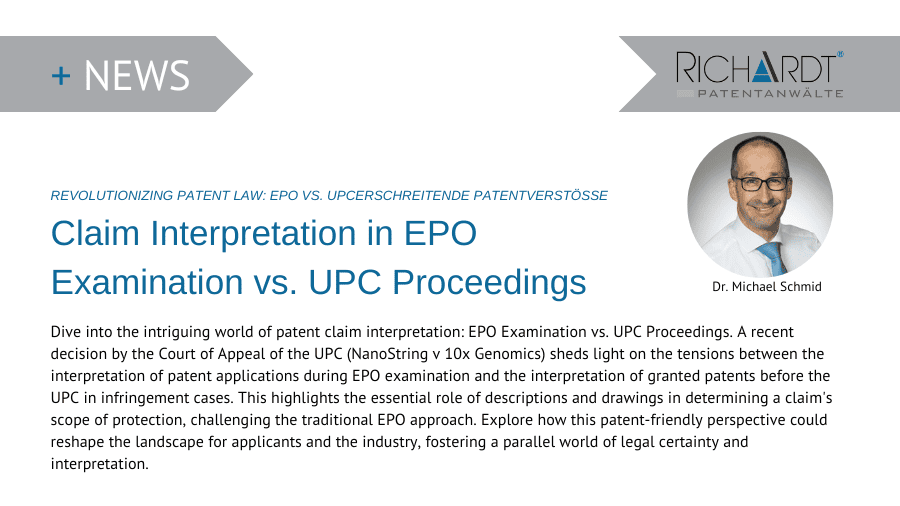The Court of Appeal of the UPC has recently issued a decision (NanoString v 10x Genomics, UPC_CoA_335/2023) which illustrates the tension between the claim interpretation of patent applications in EPO examination proceedings and the claim interpretation of granted patents before the UPC in the event of infringement and thus also in UPC revocation proceedings.
The Role of Description and Drawings in Claim Interpretation
According to the headnotes of the cited decision, the description and drawings must always be used for claim interpretation in order to determine the scope of protection of a claim. “The interpretation of a patent claim does not depend solely on the strict, literal meaning of the wording used. Rather, the description and the drawings must always be used as explanatory aids for the interpretation of the patent claim and not only to resolve any ambiguities in the patent claim. This does not mean that the patent claim merely serves as a guideline but that its subject matter also extends to what, after examination of the description and drawings, appears to be the subject-matter for which the patent proprietor seeks protection".

Diverging Interpretations: EPO vs. UPC
This is contrary to the EPO's approach to assessing the patentability of patent claims. According to the general practice of the EPO, the claims should normally be considered in isolation, with reference to the specification only in case of ambiguities in the claims. On the other hand, as clarified in the recent UPC decision, the claims of a granted patent will always be interpreted in the light of the specification. It is quite realistic to assume that terms could be given a different meaning in the EPO examination procedure than in the downstream UPC infringement proceedings.
An example would be a material property that is clearly defined in the claim, but the description indicates that this material property may well vary within considerable ranges (thickness, density, concentration). While the EPO examines the patent based on the claim only considering the precise property, infringement proceedings are based on the broader understanding provided by the description.
The UPC's Patent-Friendly Approach and Its Implications
On the one hand, this patent-friendly approach of the UPC is understandable because the UPC wants to keep its attractiveness high in order to make the unitary patent attractive to applicants. On the other hand, it opens a parallel world diametrically opposed to the EPO's examination practice. Legal certainty that provides clear consistency in the interpretation of patent claims in the examination and infringement process would be highly desirable for both applicants and industry.
Talk to us and contact us for further information at:
Phone: +49 (0)611 / 341568-0
Fax: +49 (0)611 / 341568-11
E-mail: Send email to us
PGP-Key
Author: Dr. Michael Schmid
